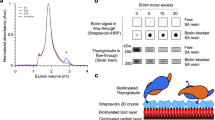Abstract
We have demonstrated that Na+/l- sym-porter ( NIS ), a novel thyroid autoantigen, has local amino acid sequence homologies with the other thyroid autoantigens: Thyroglobulin (Tg), thyroid peroxidase (TPO) and thyrotropin receptor (TSH-R). These homologies concern the 4th, 5th, 6th extracellular loop and the beginning of the intracel-lular tail. We have expanded our studies and found that there are significant local homologies with other 11 proteins, most of them of bacterial or viral origin (e.g., Streptococcus or Herpes). These ho-mologies concern the 2nd and 4th extracellular loop, and both the beginning and the end of the intra-cellular tail. These 11 homologies were retrieved by a computer-assisted search and extracted out of a database containing almost 300,000 amino acid sequences. These homologies were of magnitude greater than those concerning the three thyroid autoantigens [identities=51.1±7.3% vs 25.3±7.8% (mean±SD), p<0.001; similarities=70.6±10.7% vs 43.3±8.5%; p<0.001]. In addition, extensive, not local, homology was found with a number of unknown proteins from invertebrates (Drosophila melanogaster and Caenorhabditis elegans) and bacteria such as Bacillus subtilis and Xantho-bacter. Previously, we had found that NIS has no extensive homology with Tg or TPO or TSH-R. This is the first demonstration of both extensive and local homologies between one thyroid autoantigen (NIS) and microbiological proteins. Taken together with data of the literature on the homologies between other thyroid antigens (Tg, TPO, TSH-R) and bacteria, the homologies we have now found reinforce the view that both bacterial and viral infections may trigger autoimmune thyroid diseases.
Similar content being viewed by others
References
Dai G., Levy O., Carrasco N. Cloning and characterization of the thyroid iodide transporter. Nature 1996, 379: 458–460.
Smanik P.A., Lin Q., Furmiger T.L., Ryn K., Xing S., Mazzaferri E.L., Jhiang S.M. Cloning of the human sodium iodide symporter. Biochem. Biophys. Res. Commun. 1996, 226: 339–345.
Endo T., Kogai T., Nakazato M., Saito M., Kanyshige M., Onaya T. Autoantibody against Na+/l- symporter in the sera patients with autoimmune thyroid diseases. Biochem. Biophys. Res. Commun. 1996, 224: 92–95.
Endo T., Kaneshige M., Nakazato M., Kogai T., Saito M., Onaya T. Autoantibody against thyroid iodide transporter in the sera of patients with Hashimoto’s thyroiditis possesses iodide transport inhibitory activity. Biochem. Biophys. Res. Commun. 1996, 228: 199–202.
Morris J.C., Bergert E.R., Bryant W.P. Binding of Ig G from patients with autoimmune thyroid disease to rat sodium-iodide symporter peptides: evidence for the iodine transporter as an autoantigen. Thyroid 1996, 6 (Suppl. 1): S–1 (Abstract 1).
Benvenga S., Bartolone L., Trimarchi F. Thyroid iodide transporter: local sequence homologies with thyroid autoantigens. J. Endocrinol. Invest. 1997, 20: 508–512.
Morris J.C., Bergert E.R., Bryant W.P. Binding of immunoglobulin G from patients with autoimmune thyroid disease to rat sodium-iodide sym-porter peptides: evidence for the iodide transporter as an autoantigen. Thyroid 1997, 7: 527–533.
Pearson W.R., Lipman D.J. Improved tools for biological sequence comparison. Proc. Natl. Acad. Sci. USA 1998, 85: 2444–2448.
Worley K.C., Wiese B.A., Smith R.F. BEAUTY: an enhanced BLAST-based search tool that integrates multiple biological informations resources into sequence similarity search results. Genome. Res 1995, 5: 173–184.
Altschul S.F., Madden T.L., Schaffer A.A., Zhang J., Zhang Z., Miller W., Lipman D.J. Gapped BLAST and PSI-BLAST: a new generation of protein database search programs. Nuclear Acid. Res. 1997, 25: 3389–3402.
Benvenga S., Trimarchi F., Facchiano A. Homology of calcitonin with the amyloid-related proteins. J. Endocrinol. Invest. 1994, 17: 119–123.
Kyte J., Doolittle R.F. A simple method for displaying the hydropathic character of a protein. J. Mol. Biol. 1982, 157: 105–132.
McLachlan S.M., Rapoport B. Evidence for a potential common T-cell epitope between human thyroid peroxidase and human thy-roglobulin with implications for the pathogenesis of autoimmune thyroid disease. Autoimmunity 1989, 5: 101–106.
Hoshioka A., Kohno Y., Katsuki T., Shimojo N., Maruyama N., Inagaki Y., Yokochi T., Tarutani O., Hosoya T., Niimi H. A common T cell epitope between human thyroglo-bulin and human thyroid peroxidase is related to murine experimental thyroiditis. Immunol. Lett. 1993, 37: 235–239.
Tonacchera M., Cetani F., Uibo R. Mapping thyroxidase epitopes using recombinant protein fragments. J. Endocrinol. Invest. 1994, 17 (Suppl. 1): 18 (Abstract 34).
Texiere B., Bedin C., Tang H., Camon L., LaurentWinter C., Cherriere J. Characterization and sequencing of a 40-amino acid peptide from human thyroglobulin inducing experimental autoimmune thyroiditis. J. Immunol. 1992, 148: 3405–3411.
Akamizu T., Ueda Y., Hua L., Okuda J., Mori T. Establishment and characterization of an antihuman thyrotropin (TSH) receptor-specific CD4-T cell line from a patient with Graves’ disease: Evidence for multiple T cell epitopes on TSH receptor including the transmembrane domain. Thyroid 1995, 5: 259–264.
Wenzel B.E., Gutekunst R., Heesemann J. Hashimoto’s thyroiditis and enteropathogenic Yer-sinia enterocolitica. In: Scherbaum W.A., Bagner U., Weinheimer B., Bottazzo G.F. (Eds.) Autoimmune Thyroiditis. Springer-Verlag, Berlin, 1991, pp. 205–210.
Caillou B., Troalen F., Baudin E., Talbot M., Filetti S., Schlumberger M., Bidart J.M. Na+/l- symporter distribution in human thyroid tissues: an immunohistochemical study. J. Clin. Endocrinol. Metab. 1998, 83: 4102–4106.
Doolittle R.F. Similar amino acid sequence: chance or common ancestry? Science 1981, 214: 149–59.
Feng D.F., Johnson M.S., Doolittle R.F. Aligning amino acid sequences comparison of commonly used methods. J. Mol. Evol. 1984–85, 21: 112–25.
Author information
Authors and Affiliations
Rights and permissions
About this article
Cite this article
Benvenga, S., Alesci, S., Trimarchi, F. et al. Homologies of the thyroid sodium-iodide symporter with bacterial and viral proteins. J Endocrinol Invest 22, 535–540 (1999). https://doi.org/10.1007/BF03343605
Accepted:
Published:
Issue Date:
DOI: https://doi.org/10.1007/BF03343605




